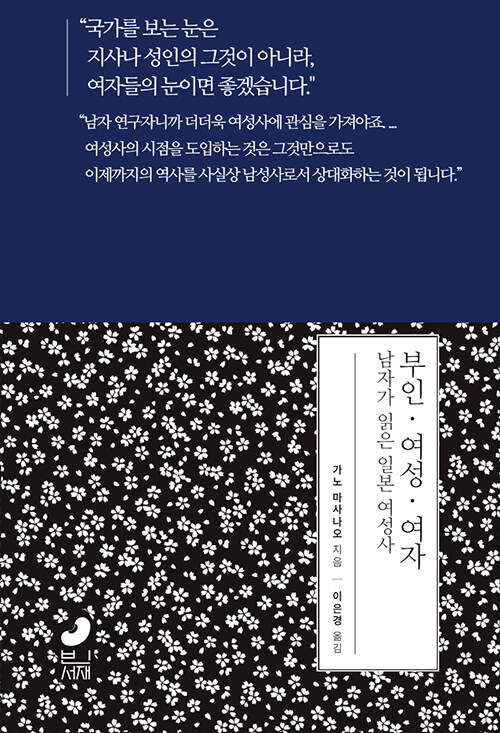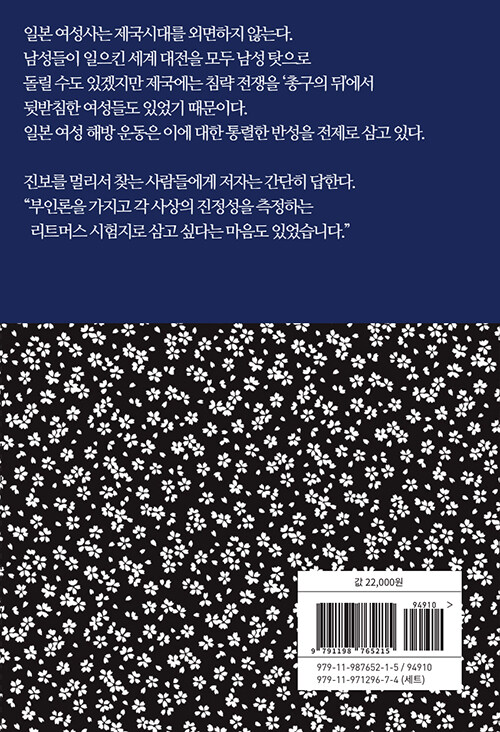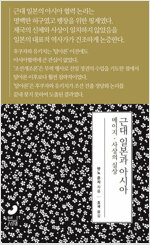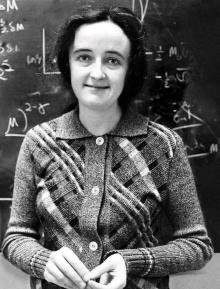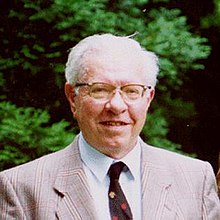Kindle
$32.87
Available instantly
Audiobook
1 CreditAvailable instantly
Hardcover
$42.63


Ian BurumaIan Buruma
Follow
Spinoza: Freedom's Messiah Hardcover – 11 June 2024
by Ian Buruma (Author)
4.5 4.5 out of 5 stars 79 ratings
Part of: Jewish Lives (68 books)
Ian Buruma explores the life and death of Baruch Spinoza, the Enlightenment thinker whose belief in freedom of thought and speech resonates in our own time
Baruch (Benedictus) Spinoza (1632–1677) was a radical free thinker who led a life guided by strong moral principles despite his disbelief in an all-seeing God. Seen by many―Christians as well as Jews―as Satan’s disciple during his lifetime, Spinoza has been regarded as a secular saint since his death. Many contradictory beliefs have been attached to his name: rationalism or metaphysics, atheism or pantheism, liberalism or despotism, Jewishness or anti-Semitism. However, there is no question that he viewed freedom of thought and speech as essential to an open and free society.
In this insightful account, the award-winning author Ian Buruma stresses the importance of the time and place that shaped Spinoza, beginning with the Sephardim of Amsterdam and followed by the politics of the Dutch Republic. Though Spinoza rejected the basic assumptions of his family’s faith, and was consequently expelled from his Sephardic community, Buruma argues that Spinoza did indeed lead a Jewish life: a modern Jewish life. To Heine, Hess, Marx, Freud, and no doubt many others today, Spinoza exemplified how to be Jewish without believing in Judaism. His defense of universal freedom is as important for our own time as it was in his.
Read less
==
Product description
Review
"A brief but forceful entry in Yale's sprawling Jewish Lives series. . . . Mr. Buruma succeeds admirably in capturing the man as well as the essentials of his thought. Rather than unhappy and isolated, as he's sometimes been depicted, the stoic Spinoza portrayed here practically glows with serenity and grace."--Daniel Akst, Wall Street Journal
"Undoubtedly the most readable introduction to Spinoza's life now available."--Joe Moshenska, The Guardian
"In his new book, Spinoza: Freedom's Messiah, . . . Buruma observes that 'intellectual freedom has once again become an important issue, even in countries, such as the United States, that pride themselves on being uniquely free.'"--Adam Kirsch, New Yorker
"A fresh biography of one of the leading lights of the Enlightenment, whose views on rational thinking and secularization still resonate. . . . An elegant, relevant biography of a vital thinker."--Kirkus Reviews (starred review)
"Buruma does a magnificent job of demonstrating the enigmatic nature of Spinoza's thought and life. Given that mystery breeds possibility, one leaves the biography feeling like Spinoza can indeed speak in many registers to many different people."--Marc Katz, Jewish Book Council
"Ian Buruma tells the story of Spinoza's star-crossed Jewish life engagingly, drawing on his own Dutch background to give it added relief. His jargon-free critique of Spinoza's philosophy, while placing it in his time, also asks trenchantly what it might say about our time."--Gary Schwartz, author of Rembrandt in a Red Beret: The Vanishings and Reappearances of a Self-Portrait
"Ian Buruma has written a wonderfully lively and instructive introduction to the great philosopher who led a 'modern Jewish life, ' and whose struggles for freedom of thought provide a model for us today."--David A. Bell, Princeton University
"In this short and splendid book, Ian Buruma incarnates Spinoza as an exceptional human being, but human all the same. His immensely vivid account breathes new life into Spinoza, freeing him from mummified versions of this great man."--Avishai Margalit, author of On Betrayal
About the Author
Ian Buruma is Paul W. Williams Professor of Human Rights and Journalism at Bard College. He is the author of many books, including Murder in Amsterdam: Liberal Europe, Islam and the Limits of Tolerance, and contributes to Harper's Magazine and the New Yorker. He lives in New York City.
Product details
Publisher : *Yale University Press; 1st edition (11 June 2024)
Language : English
Hardcover : 216 pages
==
From other countries
Israel Drazin
5.0 out of 5 stars What is Spinoza's PhilosophyReviewed in the United States on 6 May 2024
Verified Purchase
Ian Buruma’s 2024 “Spinoza: Freedom’s Messiah,” a significant addition to Jewish studies, is published by Yale University Press. This book is a comprehensive introduction to the life of the short-lived renowned Jewish philosopher Baruch Spinoza (1632-1677), who died at the early age of 45. Only two of his books were published during his lifetime: Theological-Political Treatise in 1670 and Ethics in 1677. Buruma's unique approach to Spinoza's life and ideas will captivate readers.
Buruma is the author of twenty-two other books and a Professor of Human Rights and Journalism at Bard College. His book is a valuable addition to the Jewish Lives series, a prizewinning collection of interpretive biographies that delve into the various aspects of Jewish identity. In partnership with the Leon D. Black Foundation, Yale University Press has published over sixty books, including this volume in Jewish Lives. With over thirty more books forthcoming, the series enriches our understanding of Jewish history and culture.
Buruma’s book is 216 pages long, with 12 chapters comprising 174 pages, 13 pages of notes, a page of acknowledgments, and an index of 10 pages.
The book is not a traditional biography but a collection of speculations about Spinoza’s life. It does not delve into Spinoza’s ideas and philosophy. Instead, it describes the many debates surrounding Spinoza's life and work. Buruma emphasizes that virtually everything said to be known about Spinoza is pure speculation, and scholars have different ideas about them. He praises “the excellent biography by Steven Nadler, whose book is about as exhaustive as one can be about a short life full of unknowns.”
Buruma added, “Spinoza’s complicated ideas are (also) open to many interpretations.” Scholars differ on how to interpret them. As a result, we have no definitive picture of what Spinoza was teaching other than that he was a rationalist who stressed using one’s intelligence. He writes, “The Israeli scholar Yirmiyahu Yovel has portrayed Spinoza as a philosopher whose thinking was profoundly influenced by his Marrano family background. He believes that Spinoza’s use of language and his ‘mastery of equivocation’ were rooted in the habits of his ancestors who had to hide their faith behind a veil of Christian conversion in the face of the Iberian Inquisition.” (I agree and will give my interpretation below.)
Buruma tells readers that since the fourteenth century, Jews in Spain were forced to convert to avoid persecution. Many converted while continuing to be faithful Jews secretly. Those who publicly converted but were discovered to be secretly practicing Judaism were killed. The remaining Jews were expelled in 1492. Many, including Spinoza’s family, fled to Amsterdam, where Jews were tolerated as long as they did not “clash with (Amsterdam’s) Calvinism on such matters as the immortality of the soul, belief in the afterlife, God the creator or the divine origin of the Holy Scriptures – all dogmas that Spinoza would later repudiate.” The state felt it must protect its citizens from false religions. Strict theologians were in favor of banning Jews and Catholics from the country. However, the majority agreed to tolerate them as long as they caused no clash. Noting the very sensitive situation, the Jewish leaders, including the rabbis, were cautious not to speak about subjects that might endanger their lives.
Jews and Catholics were not the only groups facing the danger of causing the Amsterdam government to stop tolerating them. English Quakers escaped persecution and fled to Holland in large numbers. However, unlike the Jews, after being in Holland for some time because of the possibility of offending the government with their religious beliefs, they left Holland for America.
Spinoza was placed in herem, meaning ostracized, on July 27, 1656. As with virtually everything regarding Spinoza’s life and thoughts, what prompted the herem is unclear. This is especially difficult to understand since we know that Spinoza was cautious throughout his life not to endanger his own life and the lives of fellow Jews by revealing what he believed.
Indeed, I am convinced that this is why his writings are unclear and subject to widely different interpretations. In this respect, he was very similar to Maimonides (1138-1204), who also hid his true rational ideas. He did so in his own way. He mixed them with the ideas of non-educated Jews. He did this because he was very compassionate and did not want to hurt fellow Jews in any way.
Buruma writes that Spinoza “was cautious about how much he was prepared (to reveal of his thinking). (This) makes his enthusiasm to publish (his book) Ethics (in 1677, long after the herem, the year he died) a bit puzzling. He must have known that this book” would enflame the passions of the Amsterdam government.
In my view, it is possible that in 1677, when he was deathly ill and died, he was not thinking very well.
Buruma ends his fascinating book, from which readers will learn much, by writing that Spinoza “showed the way all human beings can think freely and discover truths that apply to everyone. For that, we all owe him a debt, not as a ‘good Jew,’ or a secular saint, but as a great and humane man.”
While Buruma does not explain Spinoza’s ideas, I would like to do so.
First, we should realize that a policy of toleration is intolerable. Imagine a husband and wife lying in bed together. He taps his wife’s shoulder, and when he gets her attention, he says, “Whatever anyone says, I want you to know I tolerate you.” I think such an attitude is grounds for a divorce. I also think we should recognize that Jews in Amsterdam were very fearful, as were the Quakers, that the toleration policy could easily slide into a situation resulting in their death. So, they were very careful about what they said. This is why Spinoza hid his true opinions.
Second, it is reasonable to assume that Spinoza knew Maimonides’ philosophy. He most likely learned about Maimonides during his years of study of Judaism. Because of his strong interest in philosophy, it is almost certain that he read his books either in his youth or later. It is also likely that he found Maimonides’ rationalism closely akin to his own, if not identical.
Third, true Spinoza criticized some biblical laws and practices and even called some superstition and pagan. So did Maimonides. Maimonides stressed that the Torah needed to be presented to the Israelites in a way they could accept. He said it is impossible to change a person and certainly not a nation immediately. This was why the Torah had to allow slavery, sacrifices, an eye for an eye, and gave many hints that the laws needed to be changed. This is why the Torah stresses the goal of the change, “You should love the stranger as yourself,” which means to treat others as you want to be treated yourself.
This law about strangers was repeated in the Torah and thereby emphasized thirty-six times. If I were a mystic, which I am not, I would point out that the Hebrew word for “life” is made up of two Hebrew letters, the letters chet and yud. The Hebrew alphabet was used to indicate numbers. The two letters number eight and ten. The statement about strangers being said thirty-six times is twice eighteen. Thus, if I were a mystic, I would have said the Torah emphasizes the rule about the proper treatment of strangers twice “life” to teach that this law is so significant that it impacts life in this world and the world to come. Although I am not a mystic, I agree, and so does the New Testament, that “Love your neighbor as yourself” and “Love the stranger as yourself” are fundamental principles of religion.
Fourth, since, as Buruma and others pointed out, virtually all “facts” about Spinoza’s life are speculations, and Spinosa clearly never converted to Christianity, it is possible that he observed Jewish practices even after the herem.
Fifth, we should not dismiss the idea that Spinoza followed the teachings of Maimonides. For example, there is Spinoza’s unclear famous statement that God is seen in nature. Based on Exodus 33:18-23, Maimonides taught us that nothing is known about God. All that we can know is what has been created. Although not full knowledge, we get some clues about God by studying the laws of nature and learning the sciences. (We can think about God being all-powerful, all-knowing, and the like even though we do not know because the ideas are not harmful, but we should remember that we do not know.) Thus, I am convinced Spinoza stated Maimonides’ teaching in his own cryptic way.
Sixth, while I suggest that Spinoza accepted the views of Maimonides or most of them, and while I think Spinoza was brilliant, I do not believe he was as bright as Maimonides. While Maimonides was very practical, Spinoza was not, and while Maimonides devoted his life to helping fellow Jews, Spinoza secluded himself.
One person found this helpfulReport
Robert Walker
5.0 out of 5 stars Reason v. superstitionReviewed in the United States on 11 March 2024
Verified Purchase
This is a delightful read on top of Steven Nadler's brilliant works on Spinoza. Buruma brings an added twist by being from the same Nederlandish environs in which Spinoza was born. The portrait of Spinoza here is of course based on rather scant information about his personal life. But, the few data that exist support the idea of someone whose life was lived in accordance with his writings. Buruma does not just paint a hero icon, however. He details the flaws or inconsistencies in Spinoza's works, such as S.'s belief that an orderly state should include recognized religion. He does not mention or address the disconnection between S.'s dismissal of free will and yet inducement to people to live their lives differently by using reason rather than unbridled emotion or religious rituals. Doesn't it take will to enact change in one's life? And if S. argues to persuade people, he must think he is talking to free agents.
The physical properties of the book are also wonderful - fine paper, deckled edges and sharp black font, tight binding. I didn't see a single typo - an unusual even these days.
A great read.
3 people found this helpfulReport
Tamiko Hershey
4.0 out of 5 stars Good Overview on Spinoza’s LifeReviewed in the United States on 20 April 2024
Verified Purchase
The book nicely describes Spinoza’s life and experiences from what seems to be somewhat limited historical documentation. Limited speculation but also limited richness of details. Nicely accessible length but also could have delved deeper into key views. I didn’t not care for the author’s attempts to find common connections to the present day and extend that to political commentary. It would have had more significance to understand how Spinoza’s views informed the American and French revolutions and other 18th and 19th century political movements.
One person found this helpfulReport
Amazon Customer
5.0 out of 5 stars Buruma’s writing and thinking is always first rateReviewed in the United States on 27 April 2024
Verified Purchase
An exceptionally clear and concise account of Spinoza’s life, thinking, the times in which he lived, and its importance to the challenges, particularly the political challenges of our own times.
Report
Mark Nadel
5.0 out of 5 stars Informative and ConciseReviewed in the United States on 14 March 2024
Verified Purchase
Buruma provides an excellent summary of Spinoza’s theology and philosophy. He forgoes the usual turgid writing of philosophers in favor of clear explication that is accessible and even enjoyable for any attentive reader. This brief biography also provides a wonderful overview of 17th century Dutch society and government.
2 people found this helpfulReport
Bernard . Pucker
5.0 out of 5 stars Truth. Truth.Reviewed in the United States on 9 March 2024
Verified Purchase
Excellently constructed biography of Spinoza. Told with clarity and depth of knowledge of the works and ideas of the Netherlands in the mod 17th century. Occasionally too much collateral information and supposition that does not help better appreciate Spinoza and his ideas which are definitely pertinent today. The on going search for a pure truth.
Bernard H Pucker
3 people found this helpfulReport
Albert M. Schwartz
5.0 out of 5 stars Who Sponoza wasReviewed in the United States on 5 April 2024
Verified Purchase
Excellent biography, full of details but a clear presentation of Spinoza's thinking, philosophy, influences, whom he influenced
Report
BlastL3
5.0 out of 5 stars Great ReadReviewed in the United States on 8 May 2024
Verified Purchase
A well-received and liked gift
Report
Guy P. Pfeffermann
5.0 out of 5 stars Fantastic bookReviewed in the United States on 10 March 2024
Verified Purchase
A terrific highly readable book. If nothing else read the last chapter and see how supremely relevant he is in our world of today.
One person found this helpfulReport
Scholar
1.0 out of 5 stars CheapReviewed in the United States on 16 June 2024
Verified Purchase
Poor work.
Report
Sponsored
Need customer service?
‹ See all details for Spinoza: Freedom's Messiah
==









